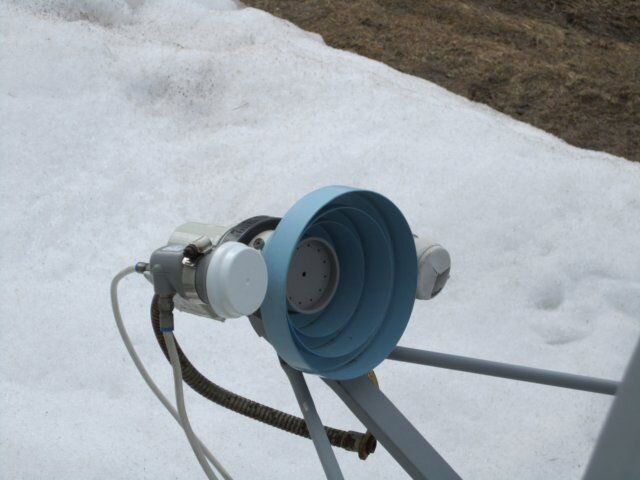I have acquired another good quality 43" x 40" Star Choice Ku dish yesterday for almost free. One person's garbage is another person's treasure. Its original LNB is in place but the plastic protector on the face of the LNB is missing. I can see the little Ku feedhorn. Does this matter or should I changeout the whole LNB to a spare I have? This means I now have 3 decent-sized FTA dishes. I have decided to use these for 87W, 103W and 125W and forget using a motor for now. This is new territory for me.
I happen to have two 4x1 diseqc switches. I have read the good faq by Anole on these which is useful. I'm still wondering if there is any way to use these two switches in series so I can have one dish near the house, then use a long cable run to another location where I will install the other two dishes? I don't think this is possible. The only reason would be to use only one long run of cable to the remote location. I don't have any 22 kHz switches or multiswitches. I might use a PLL universal LNB anyway so a 22 kHz switch wouldn't work. My other two LNBs are good quality non-PLL standard LNBs.
Another question: Is it possible to tape a second LNB beside the main one so, for example, I could receive both 87W / 91W? I've done this in past with a linear and circular LNB, but I've never tried with two linear LNBs. Same question for 103W / 99W? Would the different required elevations and skews not allow this to work for 1- and 1.2-meter dishes?


I happen to have two 4x1 diseqc switches. I have read the good faq by Anole on these which is useful. I'm still wondering if there is any way to use these two switches in series so I can have one dish near the house, then use a long cable run to another location where I will install the other two dishes? I don't think this is possible. The only reason would be to use only one long run of cable to the remote location. I don't have any 22 kHz switches or multiswitches. I might use a PLL universal LNB anyway so a 22 kHz switch wouldn't work. My other two LNBs are good quality non-PLL standard LNBs.
Another question: Is it possible to tape a second LNB beside the main one so, for example, I could receive both 87W / 91W? I've done this in past with a linear and circular LNB, but I've never tried with two linear LNBs. Same question for 103W / 99W? Would the different required elevations and skews not allow this to work for 1- and 1.2-meter dishes?





